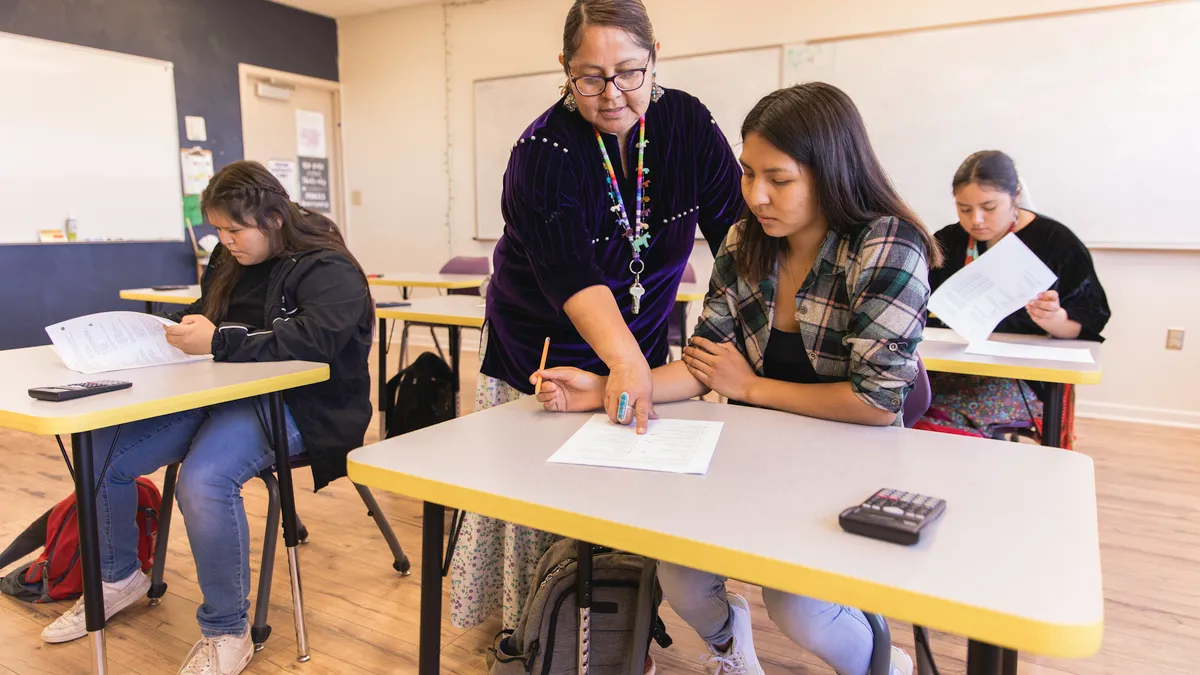Dive Brief:
-
Nearly half, or 45%, of public schools had at least one teaching vacancy as of October, according to data released Tuesday by the U.S. Department of Education’s National Center for Education Statistics.
-
The percentage of public schools reporting at least one teaching vacancy has barely budged since January, when 44% of schools reported the same number of vacancies, the most recent School Pulse Panel survey shows. However, the average number of teaching vacancies per school dropped from about 3.5 in June to 2 in October.
-
Across all teaching positions, about 4% of teaching positions remain open. That percentage remains higher, at 7%, for special education, which makes this a continuing area of concern. The survey collected data Oct. 11-25 from 990 participating schools.
Dive Insight:
The numbers indicate "public schools continue to have difficulty filling critical positions," especially those serving already marginalized populations, NCES Commissioner Peggy Carr, said in a statement on Tuesday. Schools continue to experience the fallout from COVID-19, with teacher vacancies only one part of the problem, Carr said.
Just prior to the 2022-23 school year, over half of public school leaders reported their schools being understaffed, according to a separate U.S. Department of Education report released in September. In that survey, schools said they found it slightly less difficult to hire teachers than anticipated over the summer.
Trends in that survey also suggested high-poverty schools, schools with majority minority populations, and city schools anticipated more vacancies than other schools for the current school year.
Consistent with that, the latest School Pulse Panel survey shows a higher percentage of multiple teaching vacancies in high-poverty schools, schools with high concentrations of minority students and city schools.
The NCES report likewise showed more than half of public schools in high-poverty neighborhoods, or 57%, had at least one teaching vacancy, compared to 41% of public schools in low-poverty neighborhoods. Public schools in high-minority neighborhoods were nearly twice as likely to report at least one teaching vacancy, at 60%, compared to schools with a low-minority student body, at 32%.
The same trend persists for staff vacancies, but to a lesser extent.
"The patterns are similar, but the magnitude of differences is smaller," said Rachel Hansen, a statistician in the NCES sample surveys division and the project director for the School Pulse Panel, in a press briefing on Friday.
The School Pulse Panel data is experimental — meaning it uses new data sources or methodologies and may not meet all NCES quality standards, the agency notes. However, the periodic surveys, which began during COVID-19, give a glimpse into how the pandemic has impacted school operations and leadership.







 Dive Awards
Dive Awards







